Understanding Mid-Face Anatomy
The mid-face region, including the cheeks, plays a key role in overall facial balance, proportion, and symmetry.
The cheek area provides contour, supports the lower eyelid, and transitions into the jawline. Over time, natural biological processes and environmental influences can change the appearance of this region.
A Consultation for Cheek Structure & Facial Contour allows you to explore how these factors influence your facial appearance and what non-surgical approaches may be appropriate for supporting structure, balance, and harmony.
How the Cheeks Change Over Time
Your clinician will help you understand the natural changes that occur across the layers of the face:
Bone resorption: The cheekbone and mid-face bones gradually lose density, subtly reducing projection.
Fat redistribution: Deep and superficial fat pads shift, influencing contour and fullness.
Collagen and elastin changes: Reduced structural proteins in the dermis lead to decreased firmness.
Skin hydration and quality: Reduced water-retaining molecules can affect smoothness and elasticity.
Lifestyle and environmental factors: UV exposure, stress, sleep, and smoking can accelerate visible ageing and uneven texture.
These processes are gradual, often occurring over many years, and are part of the natural ageing continuum. Understanding them provides a foundation for safe and realistic treatment discussions.

Your Consultation at Shellharbour Skin
Your consultation is a comprehensive, discussion-based appointment focused on your health, anatomy, and goals.
During this appointment, your clinician will:
- Assess your facial structure, proportions, and mid-face balance.
- Review your medical history, medications, allergies, and relevant lifestyle factors.
- Discuss your concerns and expectations.
- Explore appropriate non-surgical approaches that may help support cheek contour and harmony.
- Provide information about preparation, aftercare, and recovery expectations.
- Support you in making an informed decision about next steps.
- Offer the opportunity to ask questions or express concerns.
This ensures that any recommendations are individualised, medically appropriate, and aligned with your health and preferences.
Approach Discussions
Following your assessment, your clinician may outline options or care pathways suited to your individual circumstances.
These discussions are educational, aiming to help you understand your facial structure and explore safe, evidence-based approaches within a medically supervised setting.
Topics may include:
- Observation and review: For individuals where no immediate treatment is required.
- Lifestyle and skin-care guidance: Nutritional, hydration, and home-care recommendations to support natural skin integrity.
- Professional skin treatments: Such as energy-based or light-based options (e.g., Ultraformer MPT – HIFU, Alma Hybrid CO₂ laser, Laser Genesis) discussed for supporting skin health
- Medically directed approaches: Where clinically appropriate, your clinician may discuss treatments that act beneath the surface to support volume and facial contour.
- These are only discussed and performed following a full medical assessment and under the supervision of a qualified prescriber.
- Collaborative or referred care: Where additional medical or allied expertise would benefit your overall plan.
Your clinician will explain:
- The reasoning for any recommended approach.
- Potential side effects, downtime, and aftercare.
- The consent process and expected review schedule.
No treatment proceeds without clinical evaluation, consent, and a discussion of all relevant safety considerations.
Aftercare & Follow-up
After any clinical treatment, your clinician will guide you through post-appointment care, which may include:
- Avoiding strenuous activity or heat exposure for a short period
- Pausing active skincare until advised
- Keeping the area clean and avoiding makeup initially
- Attending a follow-up review as recommended
Each plan is tailored individually, and recovery varies between patients.
Risks and Considerations
All aesthetic treatments carry potential risks and side effects.
During your consultation, your clinician will discuss these thoroughly and explain the steps taken to minimise them.
Temporary effects may include:
- Redness
- Swelling
- Bruising
Less common risks can include:
- Infection
- Bleeding or haematoma formation
- Skin discolouration
- Itching or irritation
- Skin ulceration
- Vascular compromise
- Localised weakness or tenderness
If you experience pain, discolouration, or persistent symptoms after a treatment, contact the clinic promptly for assessment.
Cost and Planning
Fees vary depending on individual assessment, treatment approach, and clinician recommendations. Your personalised plan and cost outline will be provided following your consultation, once your suitability has been determined.
Important Information
- Shellharbour Skin only discusses specific treatment options within consultation.
- We do not advertise or promote prescription-only products.
- All services are provided following a full clinical assessment and informed consent process.
- Results and recovery times vary between individuals.
- Shellharbour Skin services are intended for adults aged 18 years and over.
Practitioner Transparency
Consultations and treatments at Shellharbour Skin are provided by a multidisciplinary clinical team:
- Dermal Clinicians – qualified professionals who are not registered under AHPRA but hold tertiary qualifications in dermal science or dermal therapies. They perform skin treatments and consultations within their scope and under clinical supervision.
- Registered Nurses – AHPRA-registered health practitioners who provide aesthetic and skin treatments within their clinical scope and training.
- Medical Practitioners – AHPRA-registered doctors experienced in skin health and aesthetic medicine who oversee and support all clinical services.
- Where clinically indicated, a medical practitioner may prescribe or supervise a treatment following in-person assessment in accordance with legal and professional standards.
All care is provided in a medically supervised environment, ensuring patient safety, clinical suitability, and adherence to evidence-based standards. You can verify practitioner registration at ahpra.gov.au
Frequently Asked Questions
Why do cheeks lose volume or change shape over time?
Facial volume naturally shifts with age as bone, fat, and connective tissue remodel.
The cheekbones may gradually lose density, fat pads can descend, and collagen production slows, all contributing to subtle changes in contour and definition. Environmental influences such as UV exposure, smoking, and sleep quality can also accelerate visible change.
What causes a hollow or sunken appearance in the cheeks?
A hollow appearance often results from a combination of bone resorption, fat redistribution, and reduced dermal support. When these layers thin or move, the overlying skin can appear less full or firm. Your clinician can assess which structural factors are most relevant to your presentation and discuss safe, evidence-based options for support.
Can lifestyle habits affect cheek structure and skin quality?
Yes. Habits such as unprotected sun exposure, smoking, dehydration, poor nutrition, and inadequate sleep can reduce collagen synthesis and impair skin repair. Addressing these factors supports long-term skin integrity and can help maintain the appearance of balanced facial contours.
Can cheek concerns be corrected without surgery?
Depending on your anatomy and goals, non-surgical options may be discussed to help support facial balance. Your clinician will explain potential benefits, limitations, and suitability, ensuring that any recommendation is medically appropriate and evidence-based. No treatment proceeds without an in-person medical assessment and informed consent.
If you have a question, get in touch and one of our staff will be in touch shortly.




